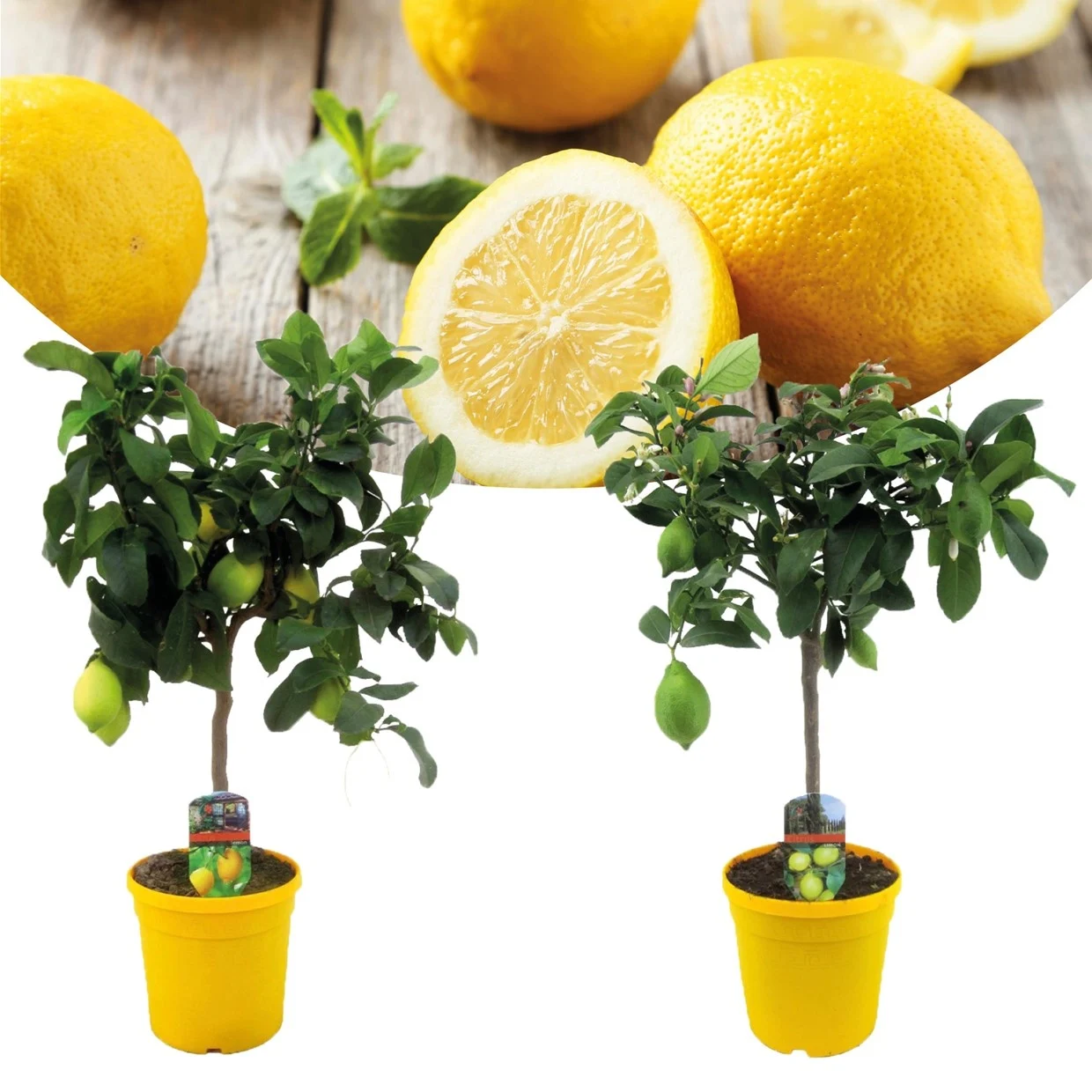
Citrus Information & tips - Plant Guide
- Water frequently
- Semi-shade, no direct sunlight
- Not air-purifying
- Nutrition every 2 weeks (summer)
- Not toxic for animals
- Repot every other year
Intro
All citrus trees look a bit alike. They are slender, densely branched trees with a slightly tangled crown. The choice is greatest in lemon and orange trees, which are also the most decorative and most cultivated on endurance. There are also grapefruit, kumquat and mandarin trees, but as an 'entry-level citrus', lemon or orange is an excellent choice. It is worthwhile to invest in an already larger specimen. Not only does it have more impact on your terrace, the slightly larger trees are also stronger, better developed and more durable than the ukkies. The leaves should be nice and green and seeing some small fruits is also a good sign.
All citrus trees look a bit alike. They are slender, densely branched trees with a slightly tangled crown. The choice is greatest in lemon and orange trees, which are also the most decorative and most cultivated on endurance. There are also grapefruit, kumquat and mandarin trees, but as an 'entry-level citrus', lemon or orange is an excellent choice. It is worthwhile to invest in an already larger specimen. Not only does it have more impact on your terrace, the slightly larger trees are also stronger, better developed and more durable than the ukkies. The leaves should be nice and green and seeing some small fruits is also a good sign.
Location
The citrus tree especially likes a sunny, light spot. Just don't put the plant for days in a row in the burning sun, but move it for a while in the shade so that the leaves don't burn. The plant cannot survive below 0 degrees Celsius in winter, so if your plant is outside, move it in at low temperatures.
Temperature
Ensure a minimum temperature of 0 degrees in the winter. Try to stay between 0 and 15 degrees in winter. In summer it is important that the plant is warmer. It can even be placed in direct sunlight.
Watering
Water the citrus tree 2 to 3 times a week in summer. However, the soil must first feel dry before you water the next splash. In winter, once a month is sufficient, as the plant will be in the resting position and will need less water.
Repotting
For the citrus tree it is important to repot in the spring. The tree will grow a lot and plants in a larger pot have more room for this. By measuring the branches and leaves you can calculate how big your pot should be. Add universal potting soil to the new pot.
Nutrition
The citrus tree grows a lot in the summer and therefore extra plant nutrition is needed. Give the right dosage of Ecostyle Citrus and Olive Food every week.
Pruning
In spring it is recommended to prune the plant well. This ensures better quality flowers and fruits and promotes the shape of the lemons.
Origin
The Citrus is native to Southeast Asia.
Diseases
The Citrus can suffer from wool and scale insects. This can be recognized by white tufts on the plant. It is recommended to fight this as soon as possible with a biological or if desired a chemical pesticide. The Citrus can also suffer from yellow leaves. This often indicates that the plant gets too much water with too little sunlight.

